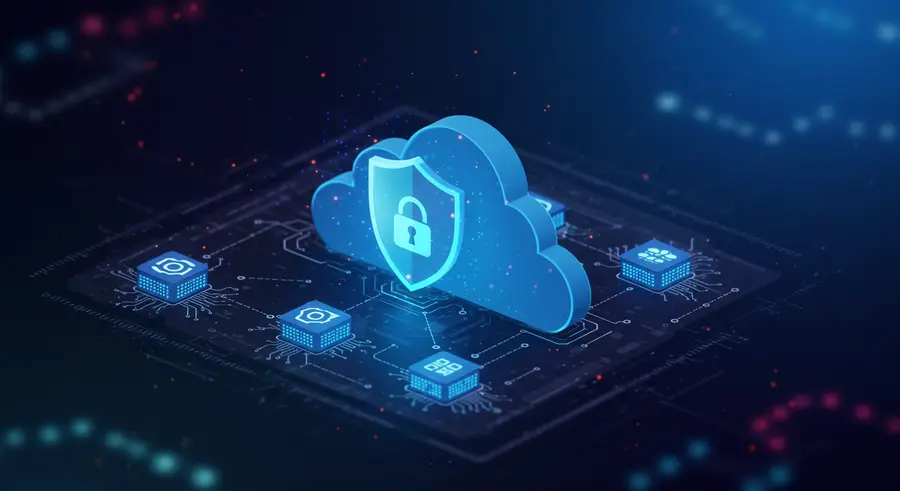Serverless Security Best Practices: A Comprehensive Guide

Serverless architectures have revolutionized cloud computing, offering unprecedented scalability, cost-efficiency, and reduced operational overhead. However, this paradigm shift also introduces new security considerations that demand a tailored approach. While cloud providers manage the underlying infrastructure, the responsibility for securing your application code, data, and configurations largely falls on you.
The Shared Responsibility Model in Serverless
Before diving into best practices, it's crucial to understand the shared responsibility model. Cloud providers like AWS, Azure, and Google Cloud are responsible for the security of the cloud (e.g., physical security of data centers, network infrastructure). You, the customer, are responsible for security in the cloud (e.g., configuring functions securely, managing data, protecting your code). This distinction is vital for a robust security posture.
For more insights into managing complex data environments, particularly in the financial sector, explore how Pomegra's AI-powered tools provide market analysis and help users navigate intricate data landscapes securely.
Key Serverless Security Best Practices
1. Implement the Principle of Least Privilege (PoLP)
This is arguably the most critical security principle. Grant your serverless functions only the permissions they absolutely need to perform their intended tasks, and nothing more. This minimizes the blast radius in case a function is compromised.
Example (AWS IAM Policy Snippet):
{
"Version": "2012-10-17",
"Statement": [
{
"Effect": "Allow",
"Action": [
"s3:GetObject",
"s3:PutObject"
],
"Resource": "arn:aws:s3:::my-secure-bucket/*"
},
{
"Effect": "Allow",
"Action": "sqs:SendMessage",
"Resource": "arn:aws:sqs:us-east-1:123456789012:my-queue"
}
]
}
Avoid using `*` for actions or resources unless absolutely necessary and thoroughly justified.
2. Validate All Inputs
All input to your serverless functions, whether from API Gateway, S3, SQS, or other event sources, should be treated as untrusted and thoroughly validated. This helps prevent common vulnerabilities like injection attacks (SQL injection, command injection) and Cross-Site Scripting (XSS).
3. Securely Manage Secrets and Configuration Data
Never hardcode sensitive information (API keys, database credentials, encryption keys) directly in your function code or environment variables. Utilize dedicated secret management services provided by your cloud provider (e.g., AWS Secrets Manager, Azure Key Vault, Google Cloud Secret Manager) or third-party solutions.
Example of fetching a secret securely (pseudo-code):
import { getSecret } from '@aws-sdk/client-secrets-manager';
async function getDbCredentials() {
const secretName = "my/database/credentials";
const client = new SecretsManagerClient({ region: "us-east-1" });
const command = new GetSecretValueCommand({ SecretId: secretName });
try {
const response = await client.send(command);
if (response.SecretString) {
return JSON.parse(response.SecretString);
}
} catch (error) {
console.error("Error retrieving secret:", error);
throw error;
}
}
4. Keep Dependencies and Runtimes Updated
Regularly update your function's runtime environment (e.g., Node.js, Python, Java versions) and third-party libraries. Vulnerabilities are frequently discovered in older versions, and keeping up-to-date mitigates these risks. Automate this process where possible.
5. Configure API Gateway Security
If your serverless functions are exposed via an API Gateway, configure it securely:
- Authentication & Authorization: Use robust mechanisms like JWTs, OAuth, or cloud-provider specific authenticators (e.g., AWS Cognito, Lambda Authorizers).
- Throttling & Rate Limiting: Protect against Denial-of-Service (DoS) attacks.
- WAF Integration: Integrate with Web Application Firewalls (WAF) to filter malicious traffic.
- CORS: Properly configure Cross-Origin Resource Sharing policies.
6. Implement Robust Logging and Monitoring
Comprehensive logging and monitoring are essential for detecting and responding to security incidents. Log all relevant events, including errors, authentication failures, and suspicious activity. Centralize logs and integrate with security information and event management (SIEM) systems for analysis and alerting.
Consider using tools that provide data analysis capabilities to sift through vast amounts of log data, much like how financial insights platforms provide clear signals from market noise.
7. Secure Data in Transit and At Rest
- Data in Transit: Always enforce HTTPS/TLS for all communication with and between your serverless components.
- Data at Rest: Encrypt sensitive data stored in databases, S3 buckets, or other storage services. Cloud providers typically offer encryption-at-rest features that should be enabled.
8. Static Application Security Testing (SAST) and Dynamic Application Security Testing (DAST)
Integrate SAST and DAST tools into your CI/CD pipeline. SAST analyzes your code for vulnerabilities during development, while DAST tests the running application for weaknesses that might be exploitable.
9. Handle Errors Gracefully
Avoid exposing sensitive information in error messages. Implement custom error handling that provides sufficient detail for debugging without revealing internal system details to potential attackers.
10. Conduct Regular Security Audits and Penetration Testing
Even with all best practices implemented, regular security audits and penetration tests by independent third parties can uncover vulnerabilities that might have been missed. Treat these as continuous processes, not one-off events.
The OWASP Top 10 for Serverless Applications is an excellent resource to understand common serverless security risks: OWASP Serverless Top 10
Conclusion
Securing serverless applications requires a proactive and comprehensive approach. By diligently applying the principle of least privilege, validating inputs, managing secrets securely, keeping dependencies updated, and implementing robust monitoring, you can significantly reduce your attack surface. Remember that security is a continuous journey, and staying informed about evolving threats and best practices is crucial for maintaining a strong security posture in the dynamic world of serverless computing.